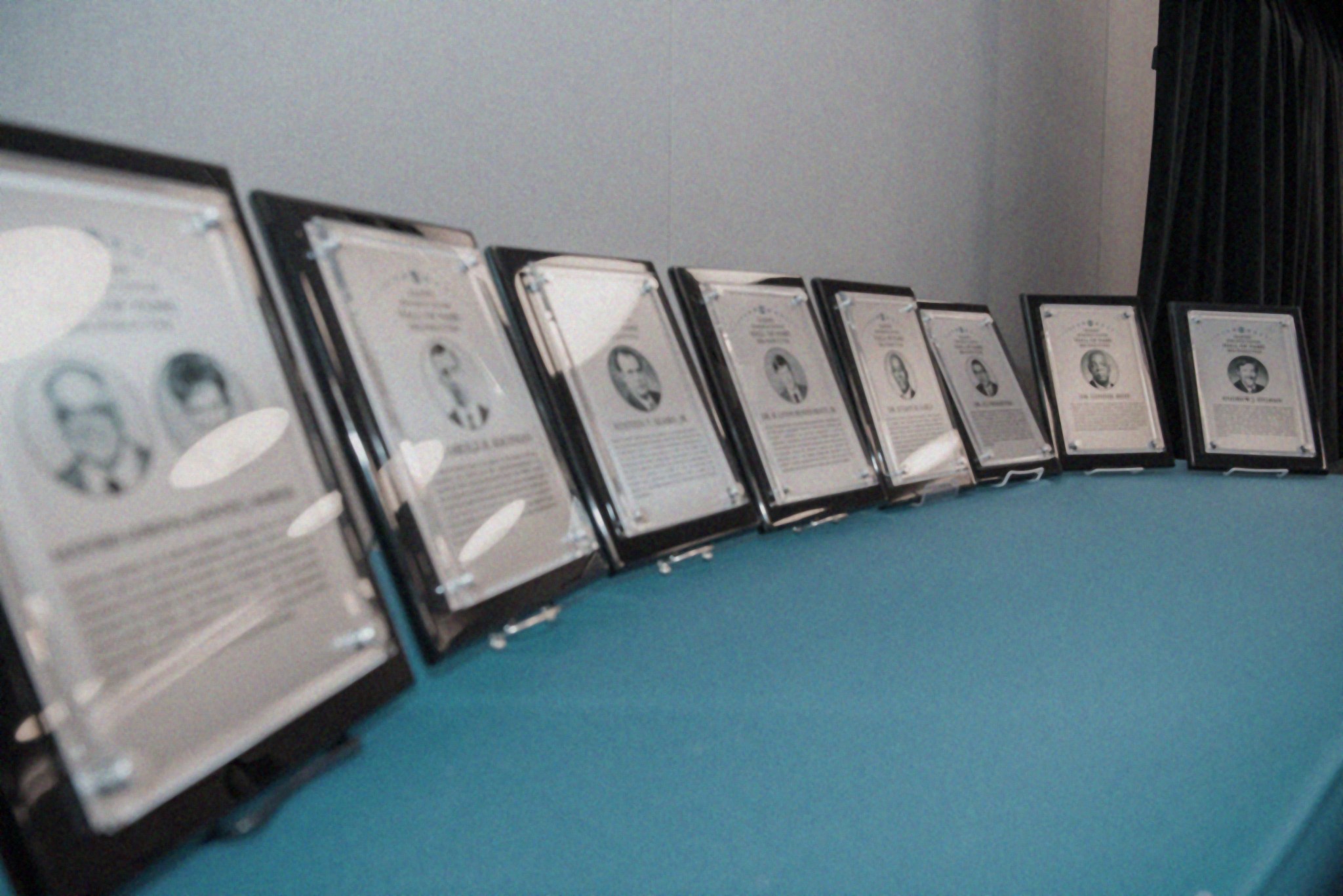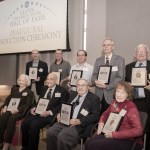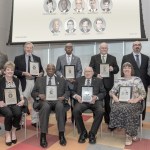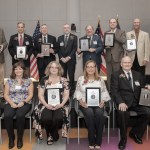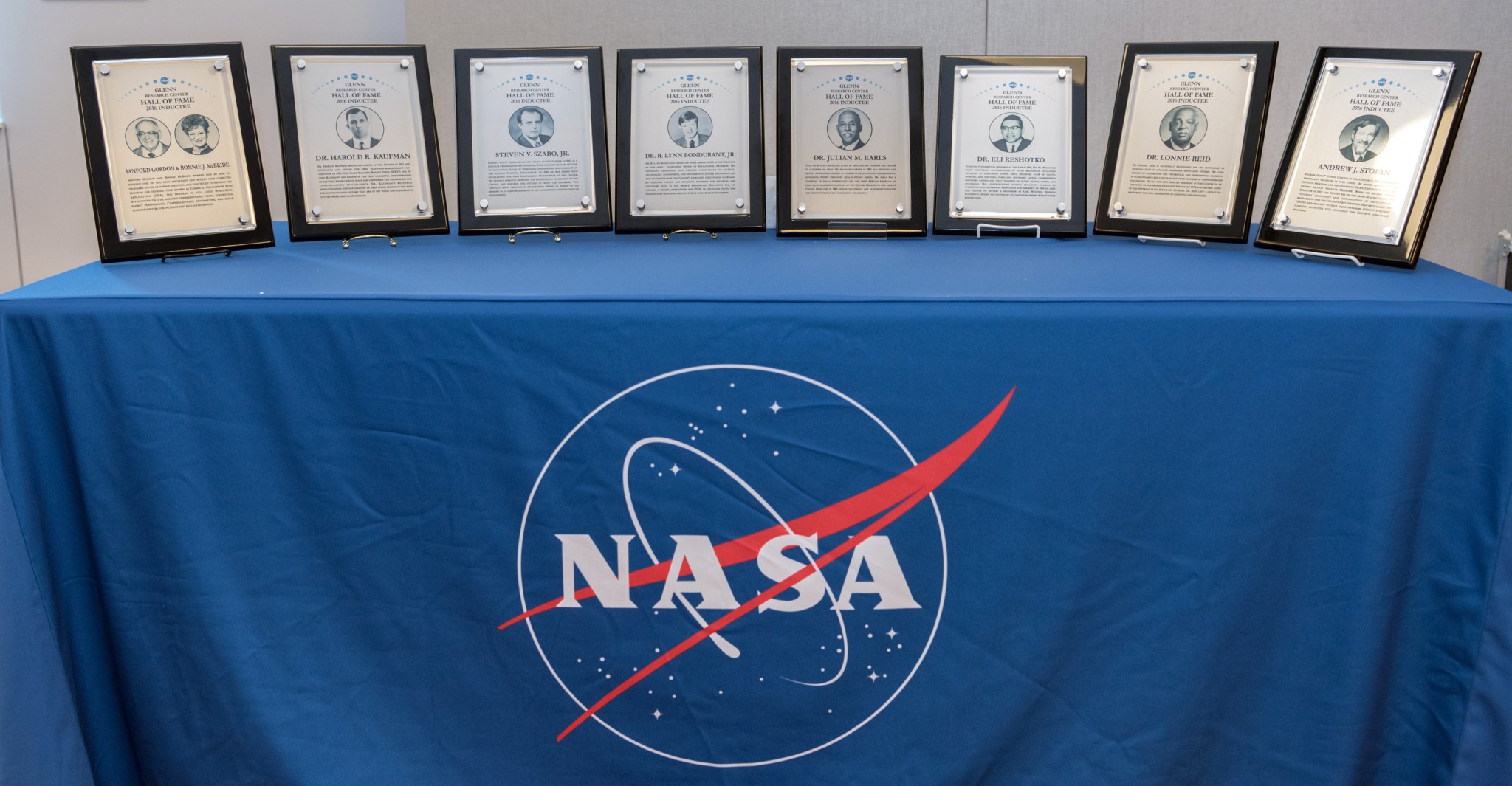Overview
The NASA Glenn Research Center Hall of Fame was established in 2015 to honor and recognize those who have built exemplary careers and contributed to our center’s success. Inductees are selected based on their contributions having a sustained and far-reaching influence on the direction and mission of the center, whose work at the center has generated fundamental advancements in their field, and/or serve as an inspiration to employees through their character and embodiment of the NASA spirit. The goal of the Hall of Fame is to not only remind ourselves that our success is built on the work of those who have come before us, but to also inspire current and future employees. Inductees receive recognition at the Hall of Fame award ceremony.
The inaugural Hall of Fame class was inducted to coincide with the Centennial of NASA’s predecessor agency, the National Advisory Committee for Aeronautics (NACA). The first Hall of Fame class was composed of employees who began their careers in the NACA era. New classes of inductees were honored in 2016 and 2021, as part of the center’s 75th and 80th anniversary celebrations. New classes will be inducted on the occasion of agency and center anniversaries at the discretion of the center director.
Induction Classes
Biographies
- Bruce Banks – Significant contributor to electric propulsion, coatings, surface texturing, and atomic oxygen; Glenn’s most patented researcher and champion of technology transfer.
- R. Lynn Bondurant, Jr. – Provided visionary leadership and commitment to education in science, technology, engineering, and math.
- Robert Deissler– World-renowned researcher and author whose theories transformed the body of knowledge of heat transfer.
- Julian Earls – Former center director and a leader in health physics and radiology.
- Annie Easley – Computer programmer and equal opportunity pioneer.
- Olga Gonzalez-Sanabria – Leader in battery research and project management and the center’s first Latina senior executive.
- Sanford Gordon – Co-developed chemical equilibrium computer codes that transformed aerospace industry.
- Harold Kaufman – Inventor of the electron bombardment ion thruster which became the basis for ensuing electric propulsion systems.
- Henry Kosmahl – Pioneer of traveling wave tube technology whose work led to the emergence of the Glenn Research Center as a leader in space communications.
- Bruce Lundin – Former center director and advocate for NACA’s evolution into a space agency.
- Bonnie McBride – Co-developed chemical equilibrium computer codes that transformed aerospace industry.
- James Modarelli – Designer of NASA’s seal and insignia and creator of the agency’s outreach program.
- Patricia O’Donnell – Leader in high-energy propellants, energy conversion, and batteries; and Glenn’s first patented female inventor.
- Simon Ostrach – World-renowned researcher whose theories transformed the body of knowledge of heat transfer, particuarly buoyancy-driven flows and microgravity science.
- I. Irving Pinkel – Leader in aerospace safety research, including icing, fires, and crashes.
- J. Anthony Powell – Innovator of silicon carbide applications that resulted in a multimillion-dollar industry with aeropropulsion, power generation, and space applications.
- Lonnie Reid – Nationally recognized for his knowledge of compressor and flow research for aeropropulsion systems.
- Eli Reshotko – Pioneering contributions in fluid mechanics, heat transfer, and boundary layers research.
- Bobby Sanders – Advanced nozzle and inlet research fundamental to the development of many subsequent high-speed inlet designs.
- E. Raymond Sharp – First center director who led the center’s establishment and growth for nearly two decades.
- Robert Siegel – World-renowned researcher and author whose theories transformed the body of knowledge of heat transfer.
- Abe Silverstein – Former center director, advocate of high-energy propellants, and architect of the early space program.
- John Sloop – Grandfather of Glenn’s rocket propulsion competency and leading advocate for liquid hydrogen as a propellant for upper stage rockets such as Saturn and Centaur.
- O. Frank Spurlock – Developer of the launch vehicle trajectory optimization program used to launch over 60 preeminent NASA missions.
- Andrew Stofan – Former center director and launch vehicles manager who championed center revitalization.
- Jesse Strickland – Influential architect who modernized the center’s approach to facility planning and design.
- Steven Szabo, Jr. – Sustained accomplishments and achievements in engineering, program management, and leadership.
- Erwin Zaretsky – Internationally recognized expert in tribology and bearing research.
Nomination Instructions
Every five years, the Center requests nominations for a new class of inductees to the Glenn Research Center Hall of Fame. Nominees, either living or deceased, must have retired or resigned from the Center as a civil servant or contractor at least five years prior to the nomination. Consideration will be given to those with sustained, far-reaching influence at the Center, those who significantly advanced their field, and those whose character provided significant inspiration.
Nominations can be made by either Center employees or the public, but all submittals must be associated with a current NASA civil servant or contractor. A panel of Center leaders will review all of the nominations and select the inductees. Specific instructions for submitting nominations will be provided when the Center announces its next call for nominations in 2026.
Other NASA Halls of Fame
NASA Glenn History
NASA’s Glenn Research Center in Cleveland, Ohio, has been making the future for over 80 years. The center’s accomplished staff, strong leadership, and unique test facilities have yielded a steady stream of technological advancements with a broad spectrum of applications.
Learn More



























